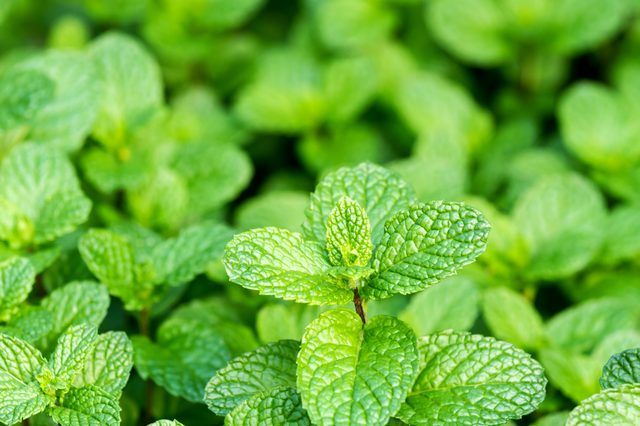Bulbs
Flower Basics
Flower Beds & Specialty Gardens
Flower Garden
Garden Furniture
Garden Gnomes
Garden Seeds
Garden Sheds
Garden Statues
Garden Tools & Supplies
Gardening Basics
Green & Organic
Groundcovers & Vines
Growing Annuals
Growing Basil
Growing Beans
Growing Berries
Growing Blueberries
Growing Cactus
Growing Corn
Growing Cotton
Growing Edibles
Growing Flowers
Growing Garlic
Growing Grapes
Growing Grass
Growing Herbs
Growing Jasmine
Growing Mint
Growing Mushrooms
Orchids
Growing Peanuts
Growing Perennials
Growing Plants
Growing Rosemary
Growing Roses
Growing Strawberries
Growing Sunflowers
Growing Thyme
Growing Tomatoes
Growing Tulips
Growing Vegetables
Herb Basics
Herb Garden
Indoor Growing
Landscaping Basics
Landscaping Patios
Landscaping Plants
Landscaping Shrubs
Landscaping Trees
Landscaping Walks & Pathways
Lawn Basics
Lawn Maintenance
Lawn Mowers
Lawn Ornaments
Lawn Planting
Lawn Tools
Outdoor Growing
Overall Landscape Planning
Pests, Weeds & Problems
Plant Basics
Rock Garden
Rose Garden
Shrubs
Soil
Specialty Gardens
Trees
Vegetable Garden
Yard Maintenance
Types of Mint
True mints are simple to grow and offer diversity in flavor, textures and form. Grow mints in containers that control their free-roaming tendencies.

The mint family (Lamiaceae family) includes many common plants such as sage, but a special group known as true mints (Mentha spp.) stand out for their garden vigor and culinary assets. Thriving in U.S. Department of Agriculture plant hardiness zones 3 through 9, depending on species and variety, mints are among the easiest garden plants to grow, but that ease can be a detriment. Some spread so easily and quickly they're considered invasive. Grow free-roaming mints in containers -- either above ground or sunk into garden soil -- to eliminate the problem. Explore the world of true mints with some of the following types:
Culinary Classics
For cooking, teas and the occasional cocktail, some mints stand out from the crowd and deserve the label "classic" for their flavor, history and pizzazz. Garden-worthy and delicious, the classics include these:
Spearmint (Mentha spicata, USDA zones 4 through 9) is the mint of choice for most culinary adventures. When a recipe calls for mint -- including a mint julep --and doesn't indicate the type, this is the mint to use. It's the dominant culinary mint throughout the Mediterranean region and essential to rustic dishes of lamb. Give it moist soil, high in organic matter and full, direct sun for optimal health and cool-mint flavor.
Peppermint (Mentha x piperita, USDA zones 5 through 9), known as candymint in some circles, is favored for teas, candies and potpourri. A cross between spearmint and watermint (Mentha aquatic, USDA zones 5 through 11), peppermint spread rapidly by underground stems known as rhizomes, but this sterile hybrid doesn't bear seeds.
Mojito mint (Mentha x villosa, USDA zones 5 through 9) is the mint behind an authentic mojito cocktail. If you want to enjoy this Cuban drink, introduced to the world by Hemingway, this is the mint you need. Don't settle for spearmint. Give mellow mojito mint sun and moist soil.
Landscape Mints
Some mints are best known outside the kitchen, but you'll want them in the garden just the same. For ornamental beauty and easy care, consider landscape mints, including these:
Corsican mint (Mentha requienii, USDA zones 6 through 9), also known as creeping mint, forms an aromatic mat of foliage that weaves artfully in and around flagstone paths, releasing its fragrance under wayward feet. Not usually considered culinary, this elfin ground cover's leaves are behind creme-de-menthe. Give it sun to part shade and moist, well-drained soil.
Ginger mint (Mentha arvensis 'Variegata,' USDA zones 6 through 9) offers up gingerlike flavor and fragrance in the garden and kitchen, but it's the foliage that takes center stage. The small, green leaves -- splashed with gold -- make a colorful, botanical carpet when grown in moist soil and sun to light shade.
Pennyroyal (Mentha pulegium, USDA zones 6 through 9) flowers with unusual globular blooms along squared red stems. Pollinators can't resist the blooms. Compact, cascading cultivars such as 'Purple Snowcones' pennyroyal (Mentha pulegium 'Purple Snowcones', USDA zones 5 through 9) spur interest in these landscape lovelies.
Flavored and Novelty Mints
Pick a flavor -- any flavor -- and you may find a mint to match. Mints cross freely and fervently, and new and unusual flavors abound. For something different, try flavored or novelty mints such as these:
Applemint (Mentha suaveolens, USDA zones 5 through 9) has soft, fuzzy leaves with a distinctive fruity, applelike scent. It prefers shade and moist soil, but it can quickly take over the garden with those conditions. Keep applemint in containers or plant in a confined area. More sun and drier soil slows it down, without diminishing the flavor.
Chocolate mint (Mentha x piperita 'Chocolate,' USDA zones 4 through 9) pairs a faint chocolate fragrance with peppermint and an occasional chocolate cast to the leaf. This herb brings new meaning to after-dinner mints. Grow it as you would standard peppermint.
Candy Lime mint (Mentha 'Jim's Candy Lime,' USDA zones 5 through 9) reminds you of sweet candied lime and holds the flavor in cakes, cocktails and cooking. Unlike most herbs, which lose flavor and fragrance when cut, this one intensifies right after harvest.